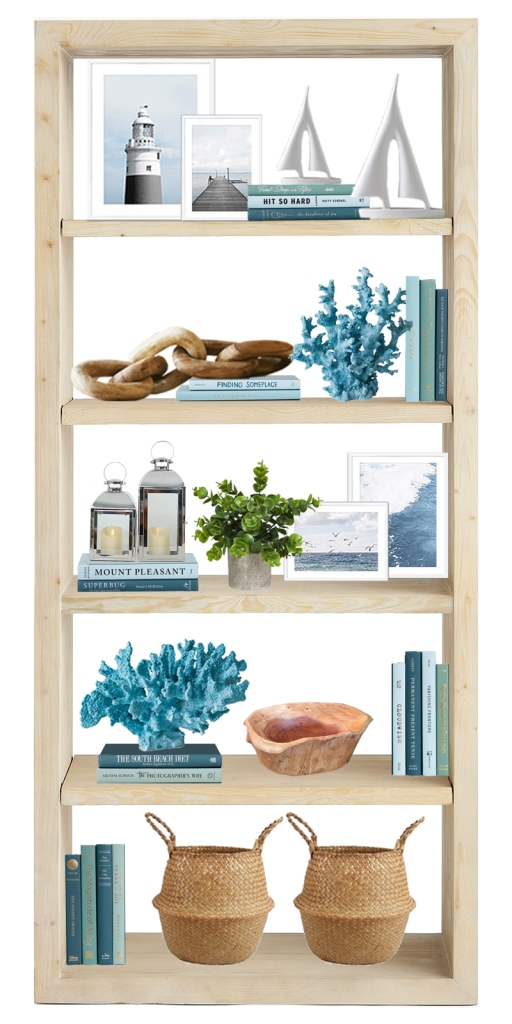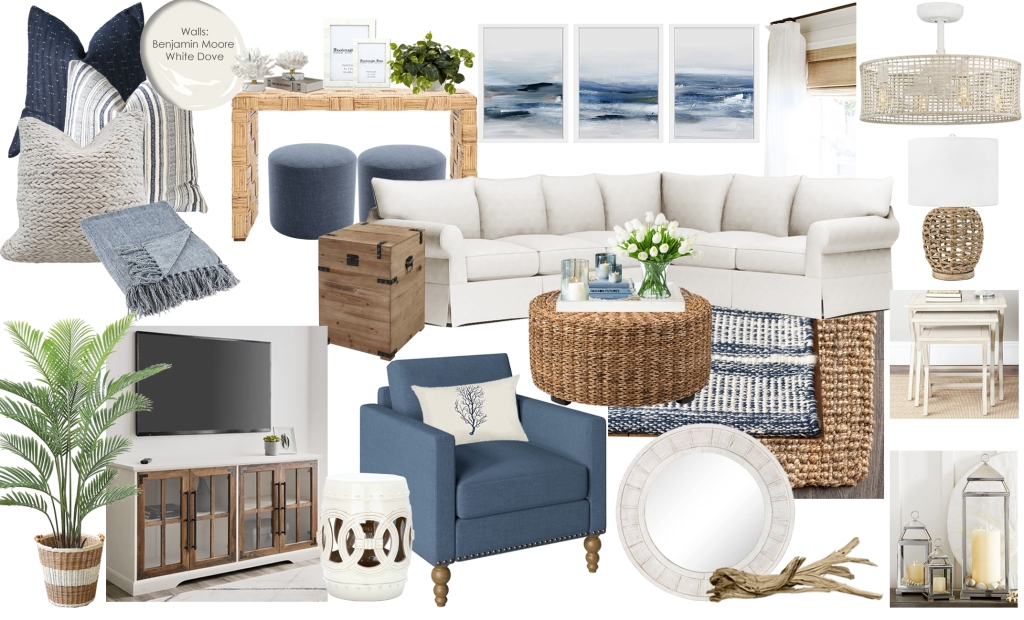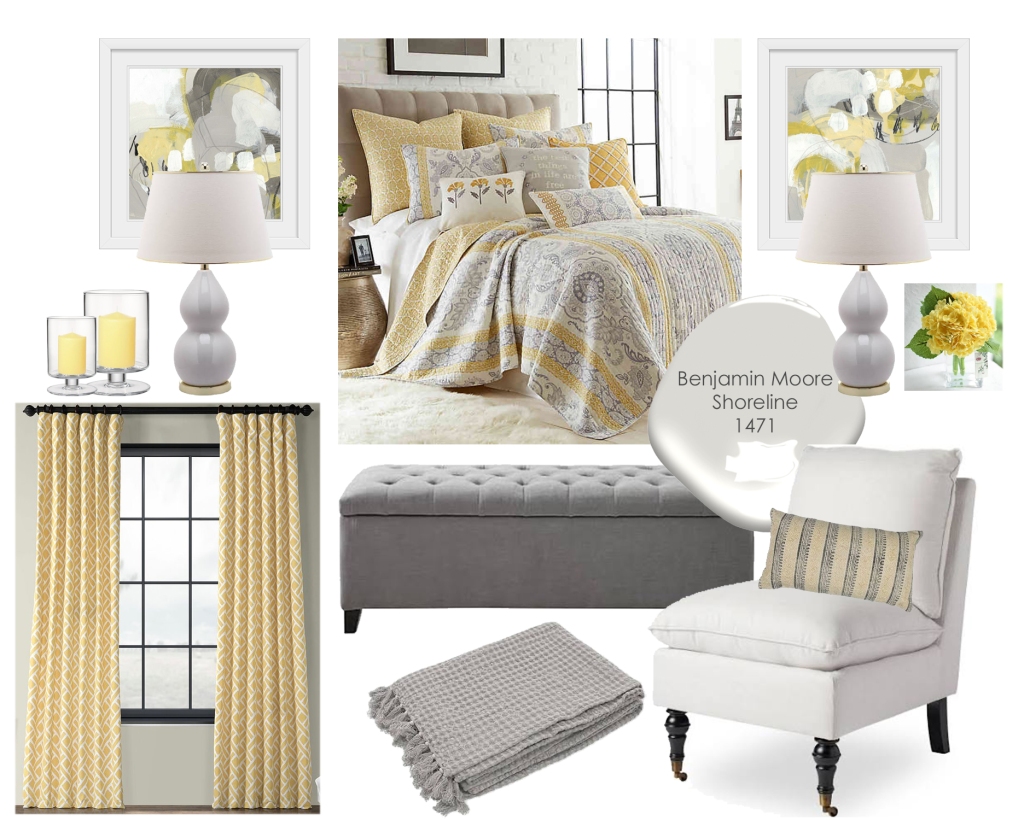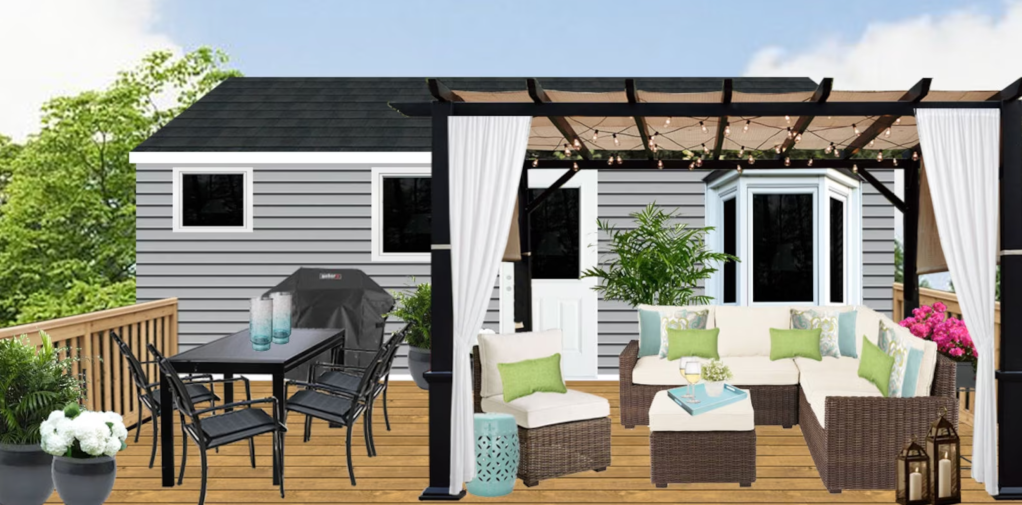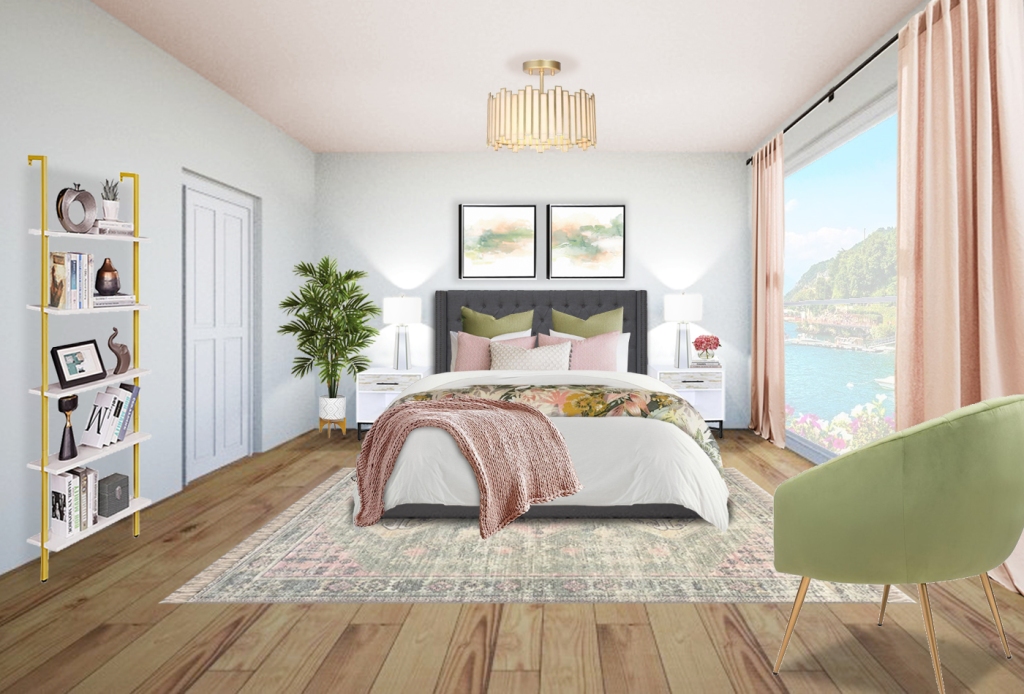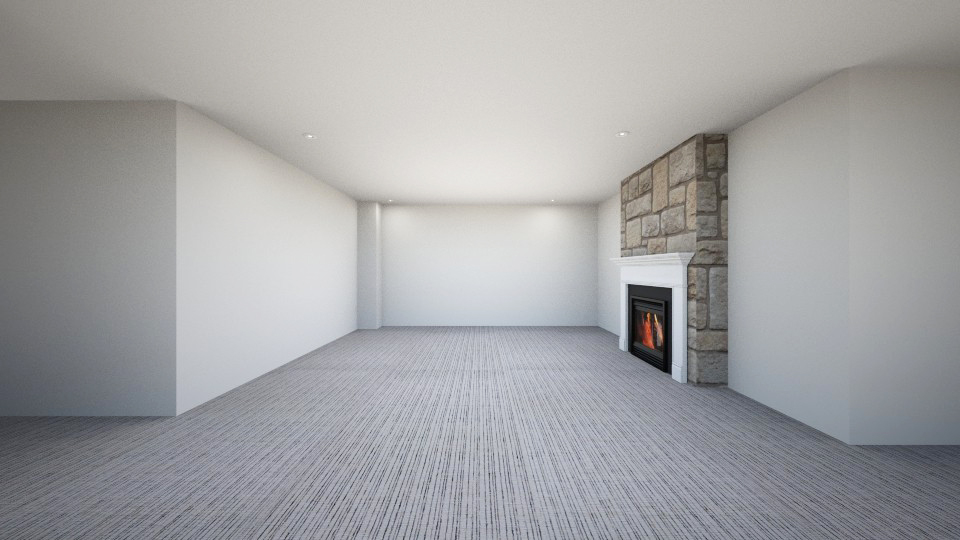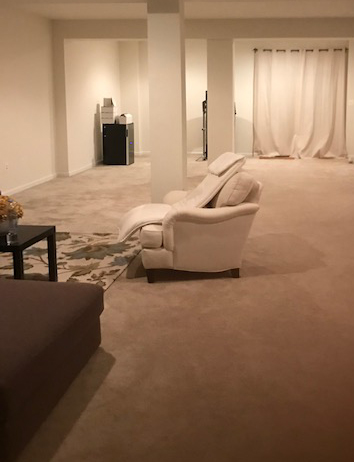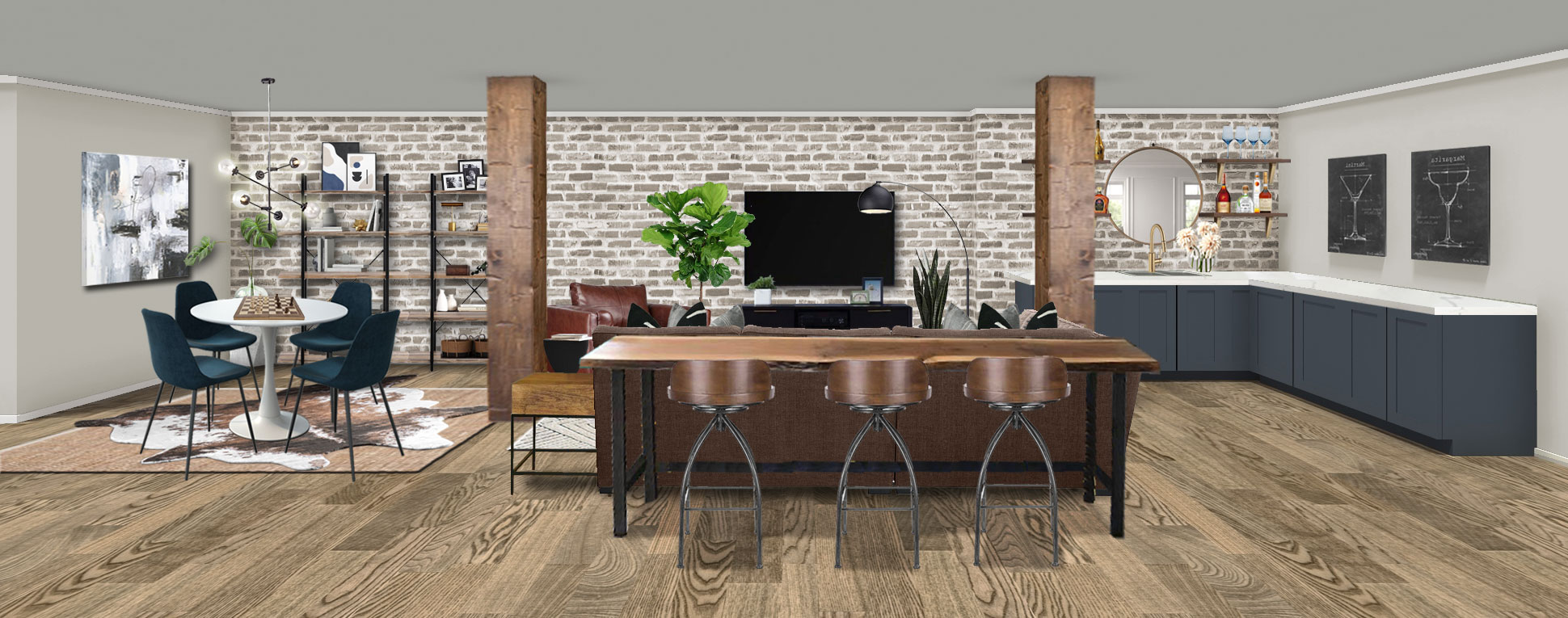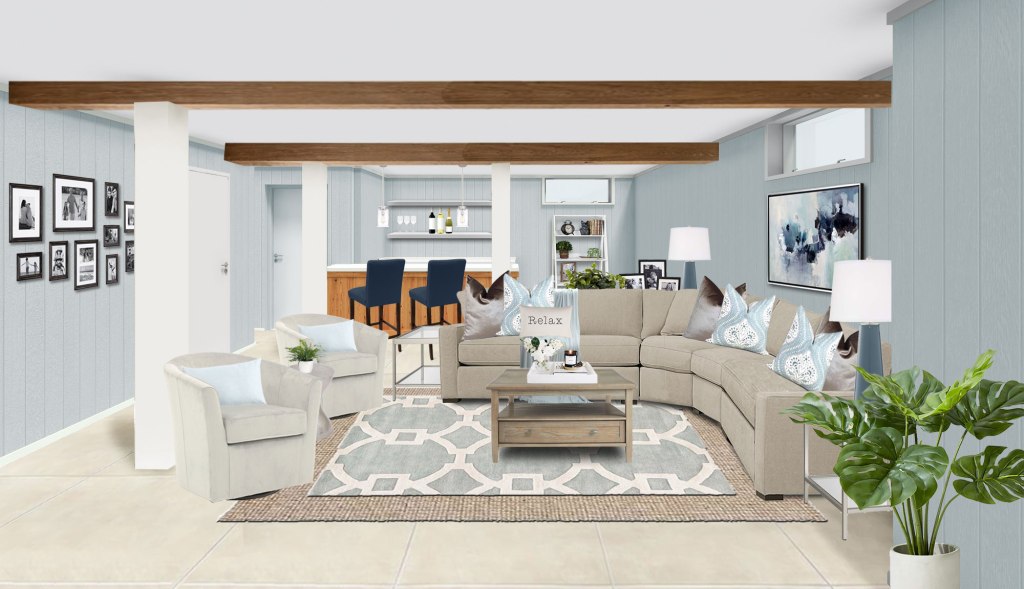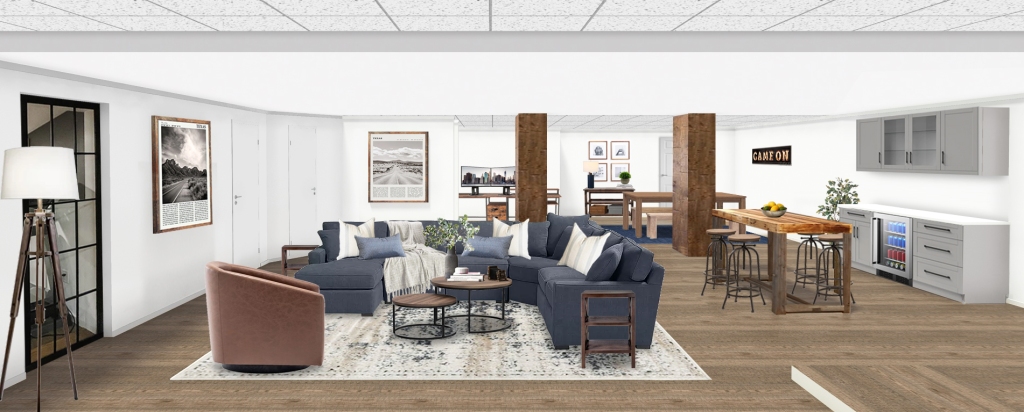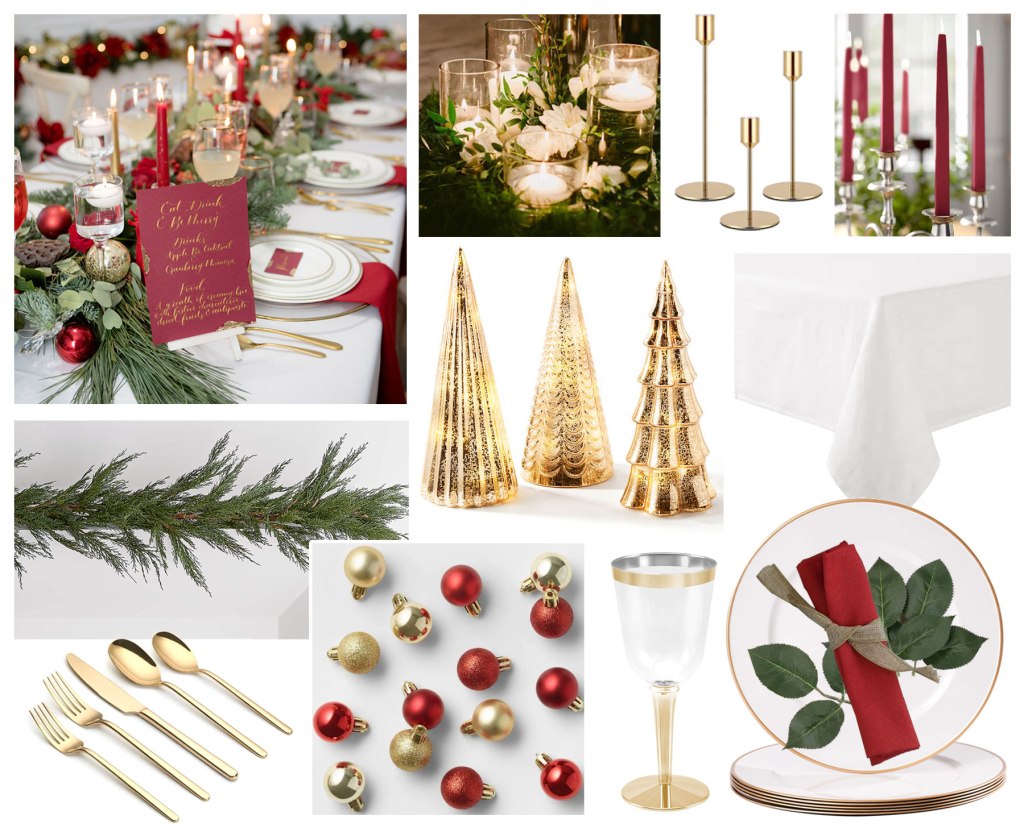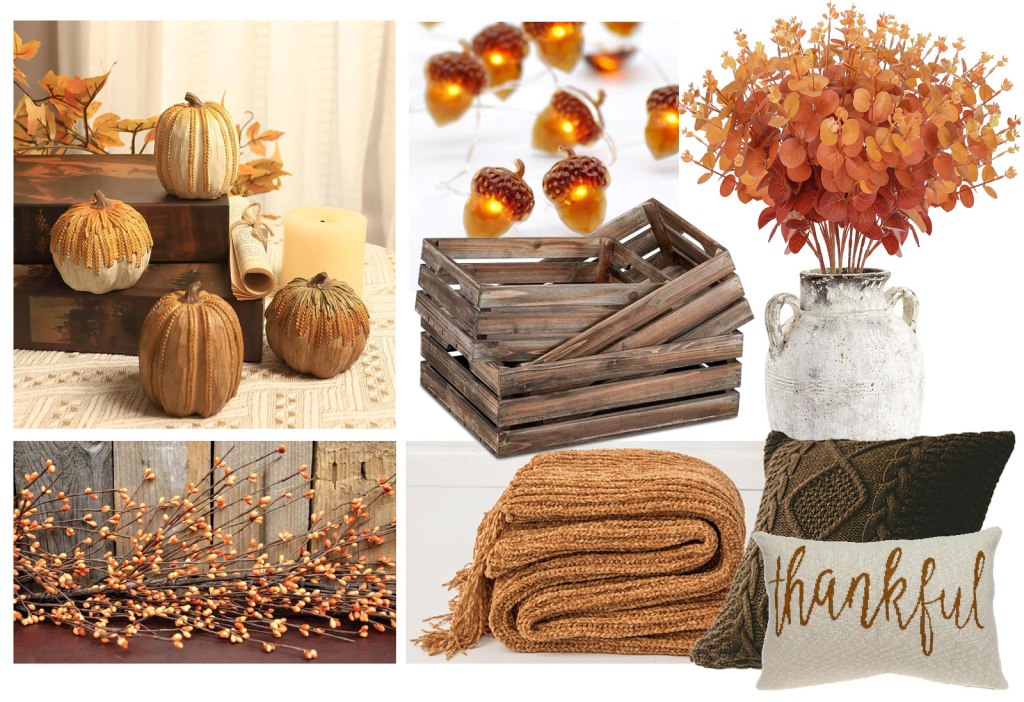Bookshelf styling can range from modern/minimalist with just one or two items per shelf…
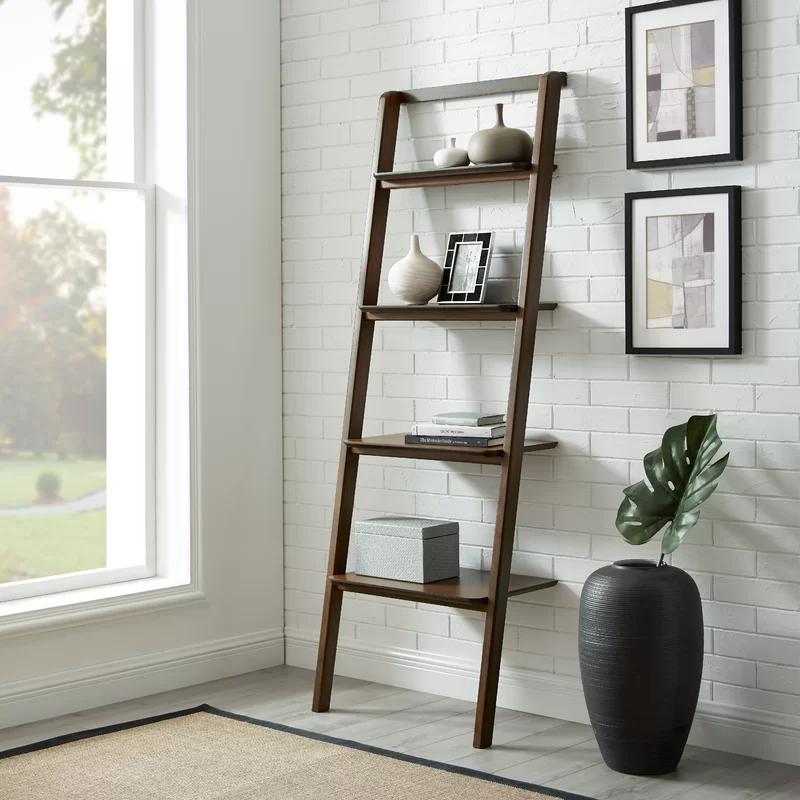
…to traditional or eclectic where the shelves are filled side to side with items:

Most of my clients fall somewhere in-between, wanting a look that feels “complete” without feeling too busy or cluttered. When asked about how to accomplish this, I provide the following tips:
Use books and store them both vertically and horizontally; where possible, set smaller items on top of the horizontal books. For a more uniform feel, use books that have the same or similar color covers, or use a mix of books for a more eclectic feel.
If you don’t have your own books that you can use, thrift stores are a great place for inexpensive books. There are also online vendors such as booksbythefoot.com who sell books by color.
If you do have your own books but they are different colors and you’d prefer a more uniform look, you can always recover them using craft paper or even wrapping paper.
Sprinkle your accent color(s) throughout the shelves using various decorative items (vases, candles, small art pieces, etc).
Group similar items together (i.e. art/picture frames, sculptures, lanterns, etc.).
Overlap some of the items for a layered, designed look.
Add greenery (real or faux).

Using these tips, you’ll be on your way to a bookshelf that looks both stylish and intentional. But if you need more guidance, feel free to reach out – I’m happy to help!

